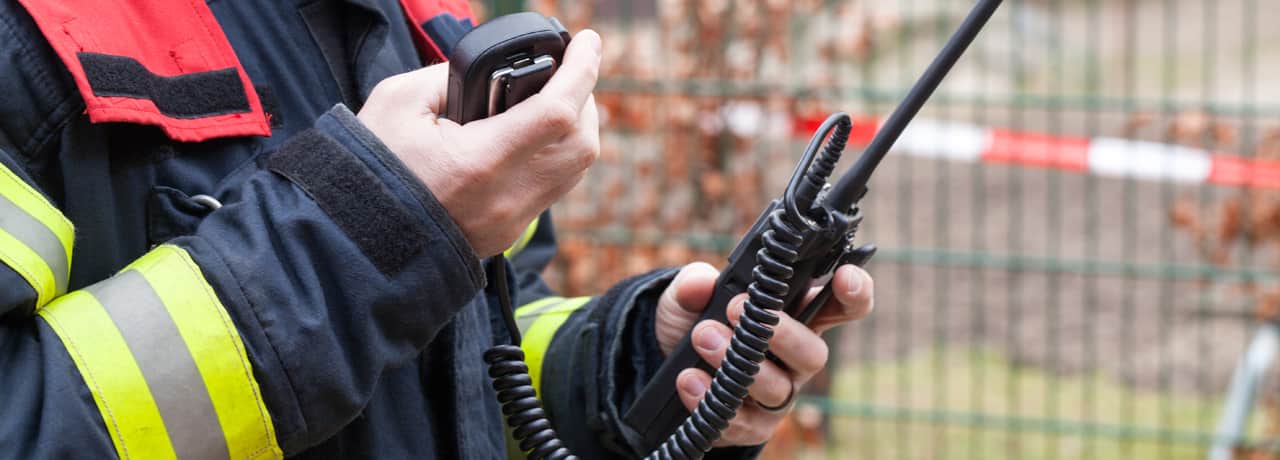November 7, 2018
First Responders, Public Safety

Related Blogs:
Sign up for blog updates
Get innovation delivered to your inbox. Sign up for our blog and stay on top of the very latest from Semtech (formerly Sierra Wireless).
November 7, 2018
First Responders, Public Safety

Presenters included:
Sierra Wireless surveyed over 200 first responders including law enforcement, fire and EMS, to help better understand the landscape of critical mobile communications for first responders. Survey results were shared as part of the live webinar.
The survey concluded consistent results across the agencies represented. First responders identify current applications using LTE technology that require high-speed bandwidth, such as computer aided-dispatch and electronic patient care reporting for EMS. While they are unified in their concerns about LTE technology for coverage, reliability and security, first responders specifically in law enforcement and EMS, are looking to bridge the gap from current LMR network solutions to an LTE-powered push-to-talk (PPT) over cellular solution, over the next 5 years. Key drivers for this hybrid strategy will help provide front-line command and supervisors with access to LMR systems when they are out of network range, fill in LMR coverage gaps, and support life-saving undercover law enforcement operations with unobtrusive devices. A key takeaway from the survey is that LTE and LMR technologies need to co-exist for the foreseeable future; a conclusion that is reinforced by several of the guest presenters in the live webinar.
Driven by the need for increased bandwidth applications that support video streaming, internet access and advanced mapping, analyst firm IHS Markit expects public safety LTE revenues in North America to reach $1.8 billion by 2020. They also expect the installed base of public safety LTE devices in North America to reach 2 million units by 2021.
But this growth will not come at the expense of LMR. Public safety LMR revenues in North America are expected to grow from $2.5 billion in 2018 to $2.8 billion by 2020, with the installed base of public safety LMR radios expected to grow from 4.8 million in 2018 to 5 million in 2021. It’s significant to note that IHS Markit does not expect the installed base of public safety LMR radios to begin to decline until the mid-2030’s
There are notable benefits and limitations for both LMR and LTE technologies. For example, while LMR radio systems have been around since the 1930’s, the technology continues to improve, with push-to-talk (PTT) that works whether devices are “on network” or “off network,” which is critical for those in life-saving scenarios, and a current limitation of LTE.
LMR implementations using digital technologies continue to replace analogue-based radio systems. Key benefits of LMR technology are that it is redundant by design, therefore there is “graceful degradation” to backup systems, and that powerful mobile and handheld radios enable voice communications, even when out of network range in steep underground areas of buildings.
LTE was not intended to replace LMR but to augment it, and while non-mission-critical push-to-talk (PTT) over cellular is a great tool for multi-response interoperability, the real goal for the future of network communications is to bridge LMR over cellular for push-to-talk.
LMR and LTE technologies have their own dedicated place for public safety. Their adoption rates will continue to grow, as they continue to work together in different critical applications. It was noted in the webinar by Andy Seybold, that it will not be technologists or vendors who ultimately decide if and when LMR is no longer needed, but rather front-line command chiefs who are responsible for the safety and well-being of first responders and the public who will decide the time to replace LMR for LTE for critical communications.
Looking to the future of LTE, the capabilities that make it increasingly appealing for public safety agencies include:
Ken Rehbehn discussed whether we can find a solution for the mission-critical push-to-talk (PPT) out-of-network range challenge and new strategies for creating LMR to LTE interoperability. Beyond voice, the benefits of LTE for boosting incident commander situational awareness includes pulling together multiple streams of data from the cloud, improving day-to-day operations for law enforcement and fire departments by enhancing the flow of information, and even using drones to create a new “dispatchable” force in the field.
Listen to the full webinar on-demand to hear the discussion, plus a lively Q&A session that included questions related to:
There’s little doubt LTE technology will have a profound impact on public safety agencies, although it is unlikely to completely displace LMR anytime soon. What’s important to understand is the potential of LTE technology to complement LMR networks with new and less expensive capabilities that allow agencies to improve the safety and well-being of first responders and the public, at a much lower total cost.
Sierra Wireless technologies and services support public safety LTE and are optimized for high-performance connectivity, priority and preemption, end-to-end security, and advanced situational awareness. Sierra Wireless’ AirLink® Networking solutions include a broad range of gateways and routers, network management and security solutions, and support services based on our 25-year history of supporting first responder communications.
Start with Sierra to find out more about how Sierra Wireless’s LTE solutions can help you re-imagine your critical communications infrastructure.
Get innovation delivered to your inbox. Sign up for our blog and stay on top of the very latest from Semtech (formerly Sierra Wireless).